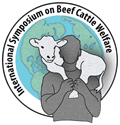Shade Benefits Feedlot Animals'
Well-being, Performance
Positive effects in cattle performance and carcass quality offset costs associated with providing shade to improve cattle well-being.
MANHATTAN, Kan. (May 20, 2010) — Shade is beneficial to a feedlot animal’s well-being and performance, reported Frank Mitloehner as he addressed the topic of environmental management of beef cattle May 20 at the International Symposium on Beef Cattle Welfare. The symposium was conducted on the campus of Kansas State University.

Research shows feedlot cattle with access to shade had higher dry-matter intake, gained more weight, and better average daily gain and were more efficient converting feed to gain, Frank Mitloehner says.
Mitloehner, who is an associate professor and air quality specialist with the Department of Animal Science at the University of California-Davis, shared results from two studies he has conducted relating to the use of shade by feedlot animals.
“Cattle will utilize shade extensively when they are prone to heat stress,” he said.
In a study comparing feedlot animals that had access to shade to a control group that did not, Mitloehner reported that animals with access to shade spent the majority of daylight hours under the shade.
These animals had higher dry-matter intake (DMI), gained more weight, had better average daily gain and had more efficient feed conversion than animals in the control group without shade. The animals with access to shade also had a lower respiration rate and showed a lower incidence of antagonistic and bulling behavior.
With regard to environmental conditions, the shade kept the ground surface temperature lower. This helps maintain moist spots under the shade, Mitloehner explained. “Moist spots can be beneficial under feedlot conditions because they can help to keep dust down.”
Mitloehner concluded from the study that:
• When provided with shade, cattle can maintain high performance levels during heat spells. He reported that the shaded animals reached their final weight and condition three weeks earlier than animals that did not have access to shade. Thus, they went to the packing plant 20 days earlier.
“This resulted in $18 per head profit and, from an environmental management standpoint, those cattle excreted for three weeks less,” Mitloehner said.
Additionally, the shaded cattle showed improved carcasses (higher quality grade and lower incidence of dark cutters). This can add to financial profit for the operation. The shade cost an initial investment of $18-$20.
• Shade alters the behavior of cattle, which may be beneficial with regard to animal welfare and the environment. Mitloehner explained that during daylight hours, cattle stay under the shade and show a decrease in activity. Cattle behavior changed in the evening. Around sunset, unshaded cattle displayed “dust-generating behaviors.” In contrast, shaded cattle increased feeding and drinking behaviors at this time.
In a second study, Mitloehner studied heifers provided shade and given an implant (Revalor H) early in the season or a delayed implant on Day 56 to heifers given the same treatments and no access to shade. He documented the following results:
• A shade x implant interaction was detected for average daily gain. Heifers receiving the initial implant and having access to shade had a greater average daily gain than heifers in the other three treatments.
• Heifers that were initially implanted and had access to shade had a greater DMI, better feed-to-gain ratio and a heavier final body weight than heifers that received the delayed implant on Day 56 and the two treatment groups that did not have access to shade.
• Shaded heifers provided an initial implant generally showed increased lying behavior compared with heifers in other treatments.
• Respiration rates were generally greater for nonshaded than for shaded heifers.
• Feedlot performance was best when shade was provided to heifers that received an implant at initial processing; however, shade did not benefit heifers implanted after 56 days.
Mitloehner said the bottom line from these two studies is that shade offers benefits to the animals’ well-being and performance.
“It is important for us [academia] to get involved,” Mitloehner said. He shared comments about how statistics related to cattle and greenhouse gases have been taken out of context and misconstrued.
“I urge you to do something to address welfare issues,” he concluded. “We really have to get ahead of the curve.”
The beef cattle welfare symposium was conducted on campus at K-State University May 19-21. For additional presentation summaries, return to the Meetings > Other Industry Meetings > News Coverage page of the API Virtual Library. For more about the symposium and an archive to the 2008 symposium, visit www.isbcw.beefcattleinstitute.org.
Editor's Note: This article was written under contract or by staff of Angus Productions Inc. (API), which claims copyright to this article. It may not be published or distributed without the express permission of API. To request reprint permission and guidelines, contact Shauna Rose Hermel, editor, at 816-383-5270.

